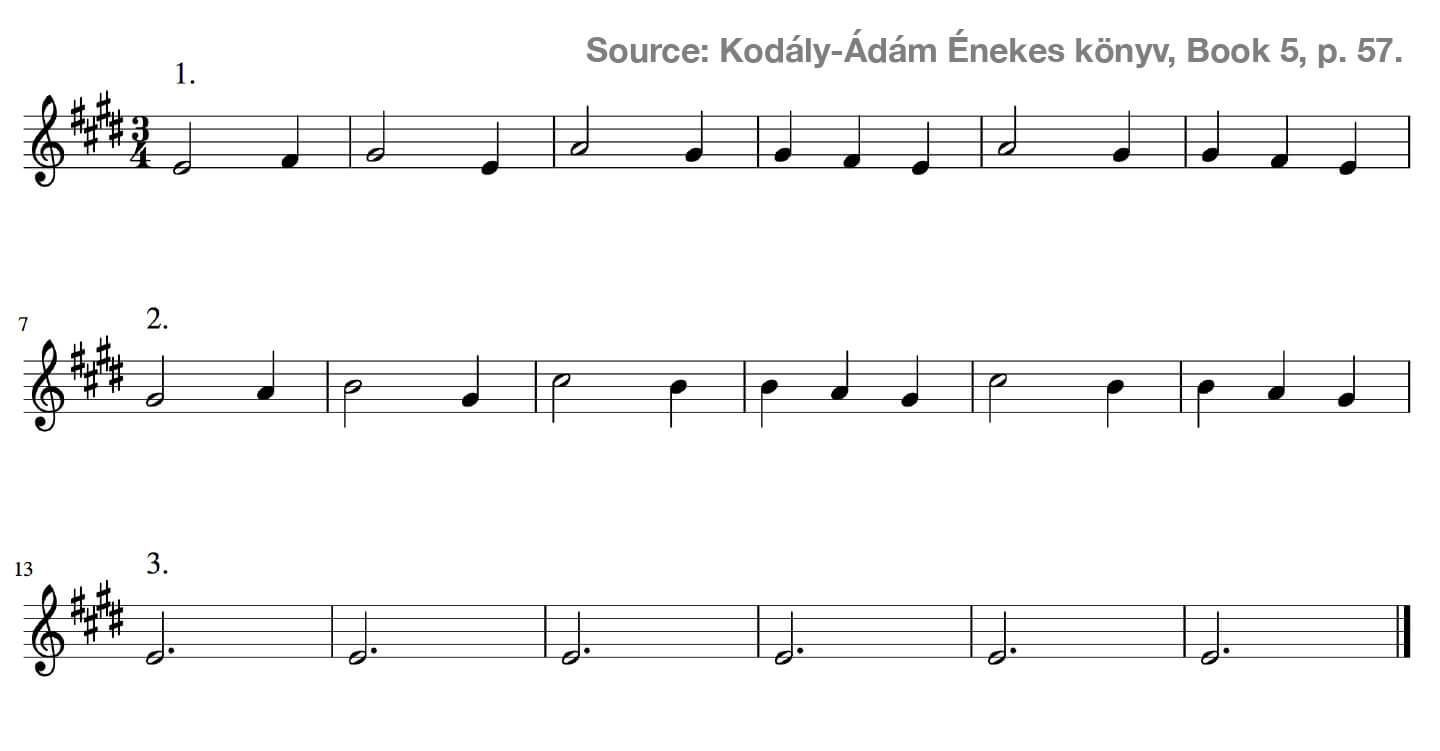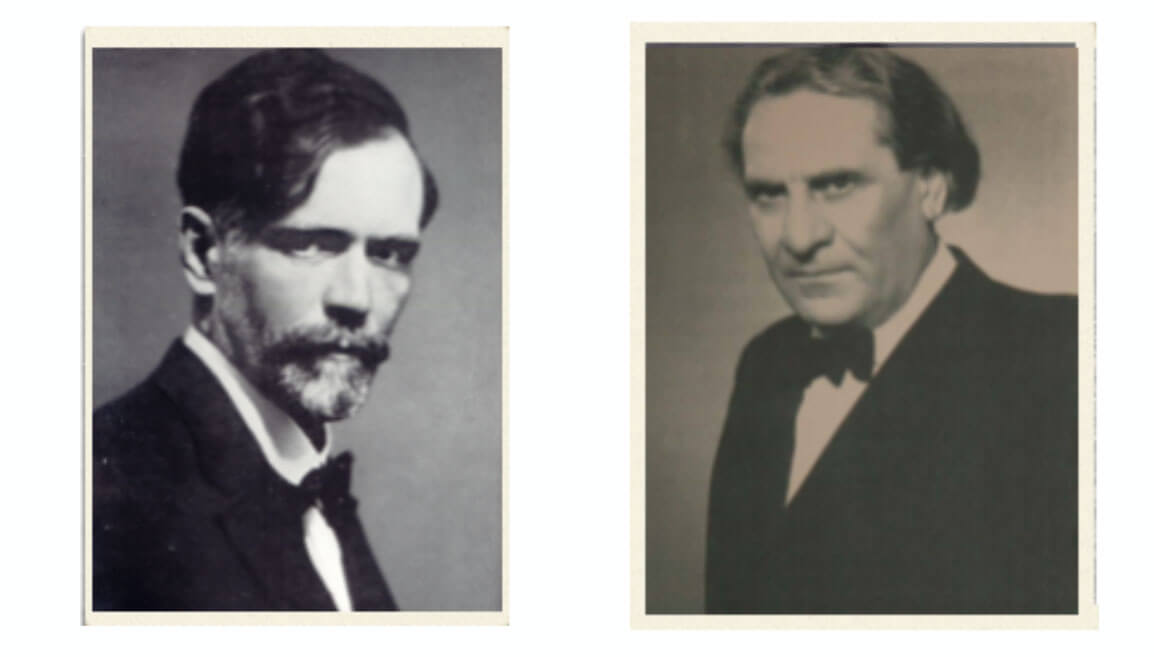Development of polyphonic skills and part-singing based on the
Kodály - Ádám
Énekes könyv (Singing Books) series
Book 5 (age 10-11)
Summary of musical concepts learnt through the folksong repertory Kodály-Ádám Singing Books, Book 5.
Rhythmic elements, metre:
- dotted rhythm patterns: “tam-ti”, “ti-tam”
- 3/4, 3/8 metre
- changing metre: 2/4 + 4/4, 2/8 + 3/8
Melodic elements and scales:
- pentatony: “la”, “so”
- pentachords: “la”, “do”
- hexachord: “do”
- modes: aeolian, dorian, mixolydian, phrygian, major
- minor
Two-part rhythm exercises
Rhythm canons
Example 105

Example 106

Rhythm exercises for practising dotted rhythms
Example 107-109
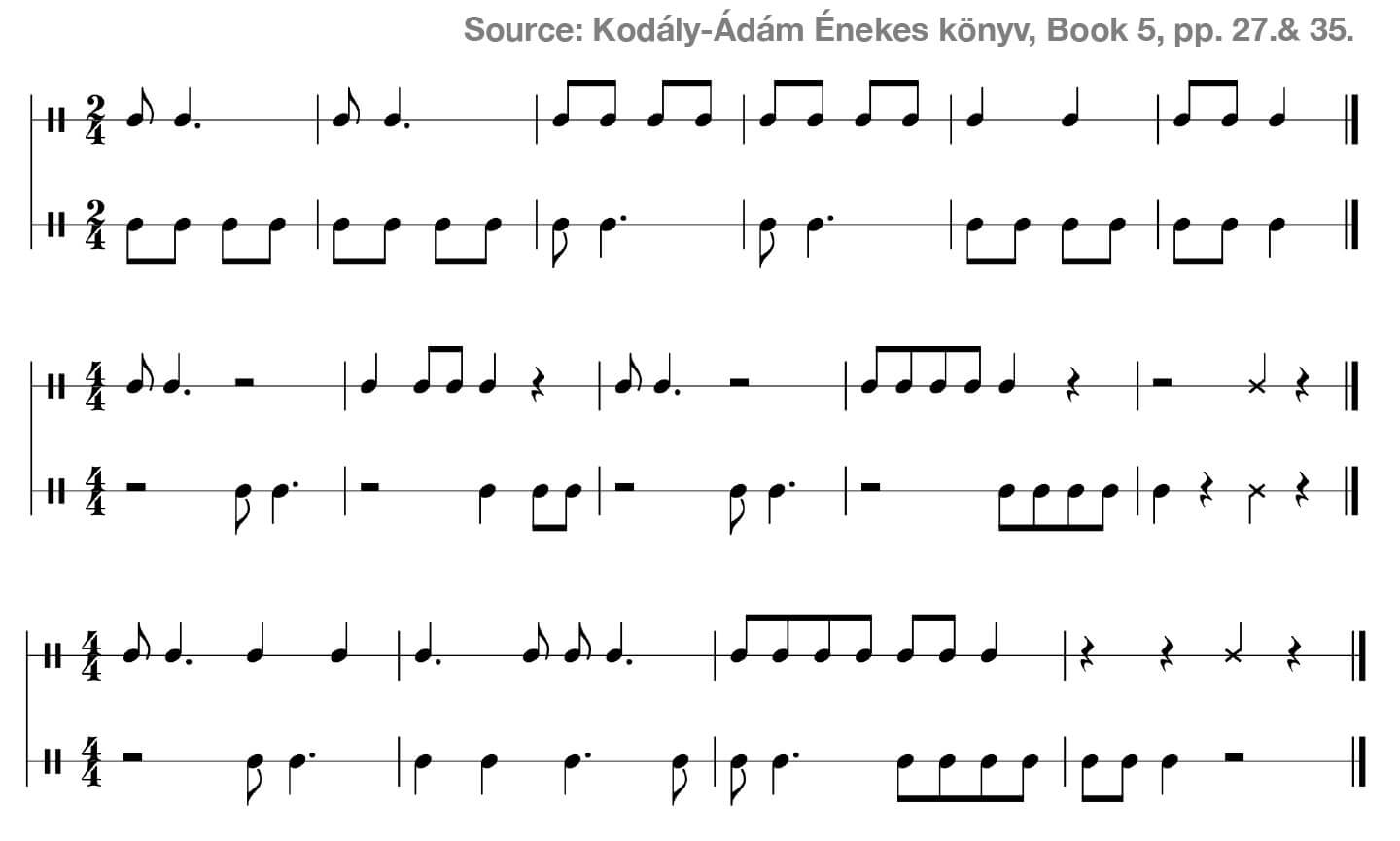
Rhythm exercises for practising 3/4 metre
Example 110-112
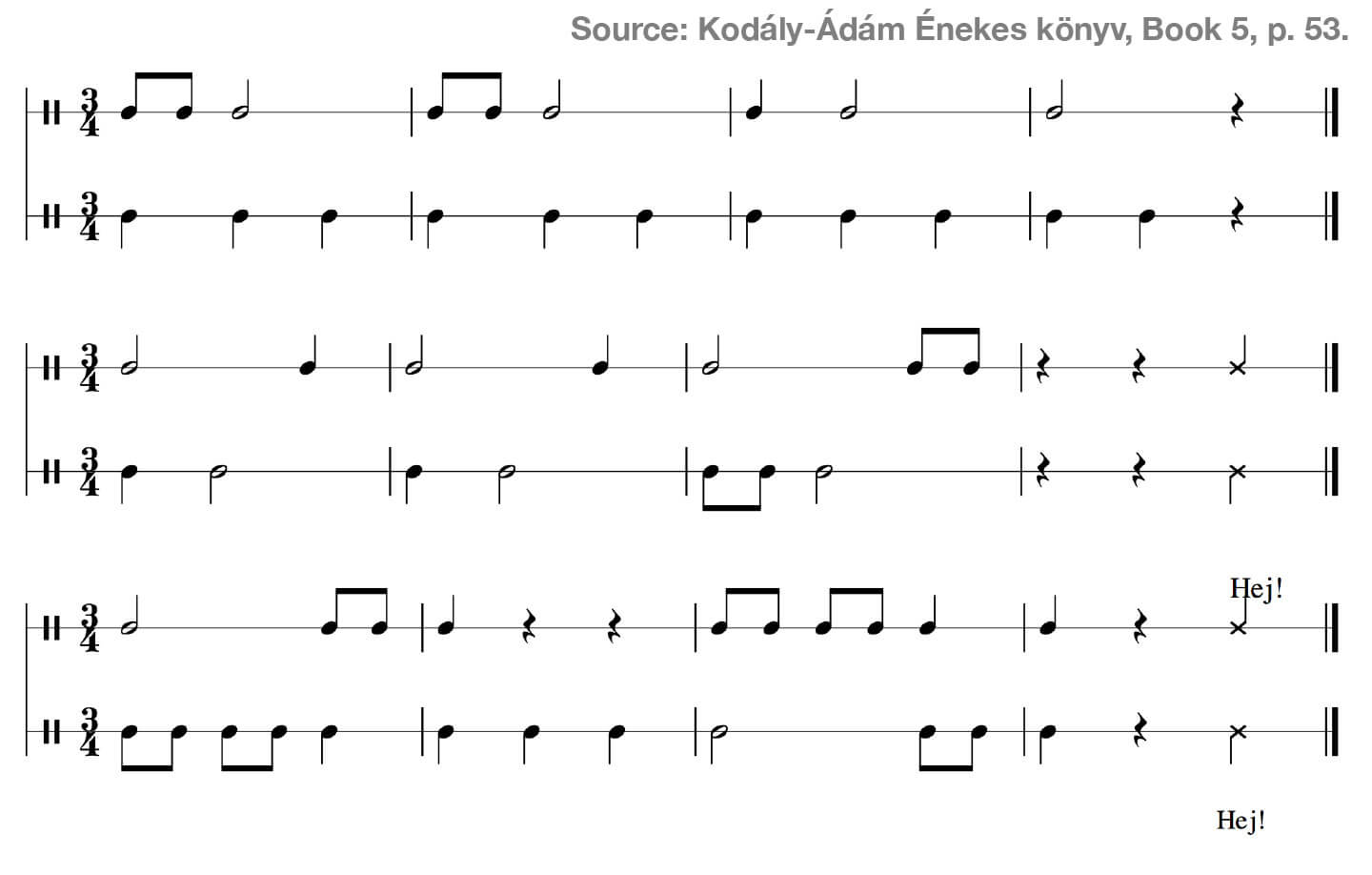
Example 113-115
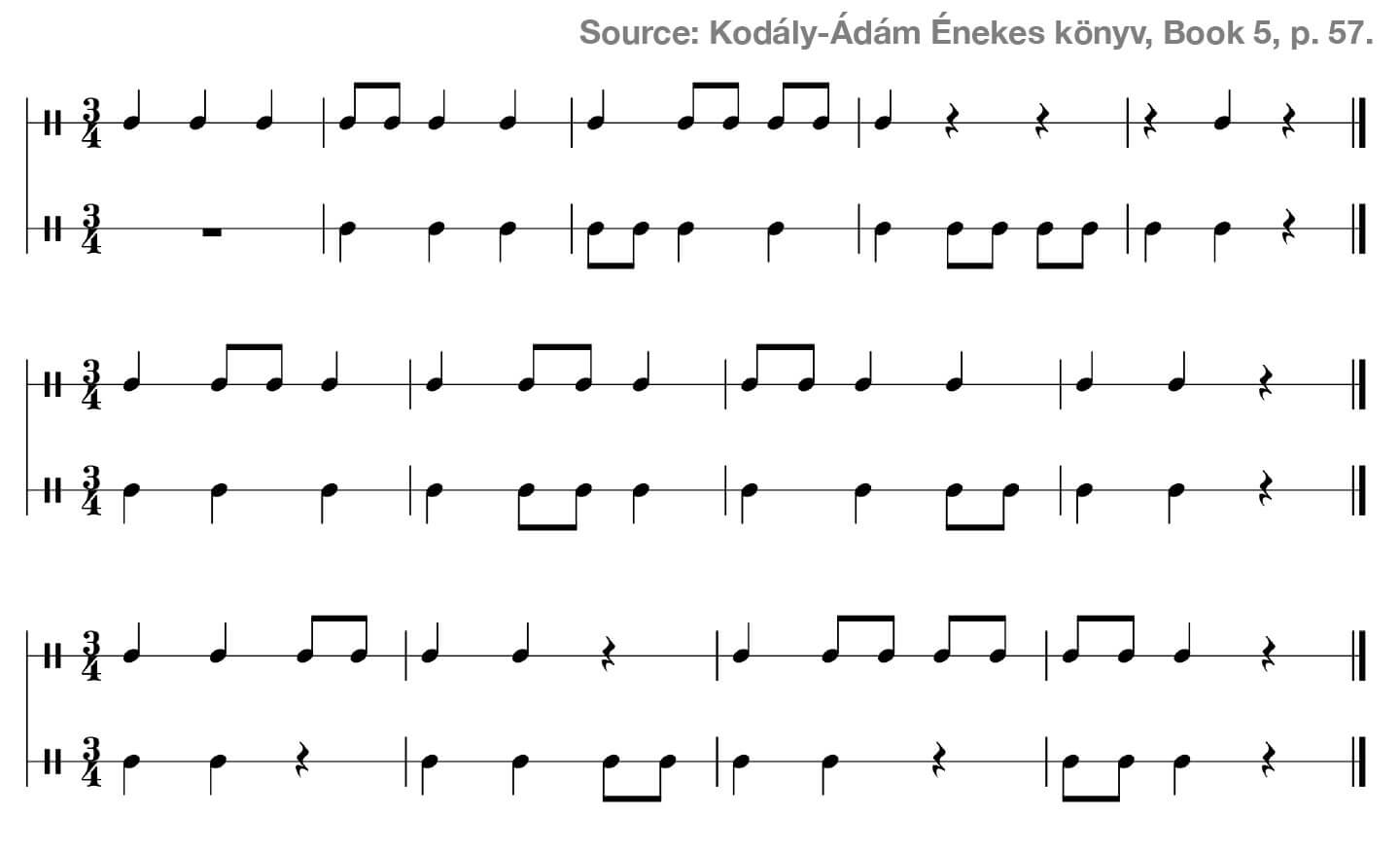
Example 116-118
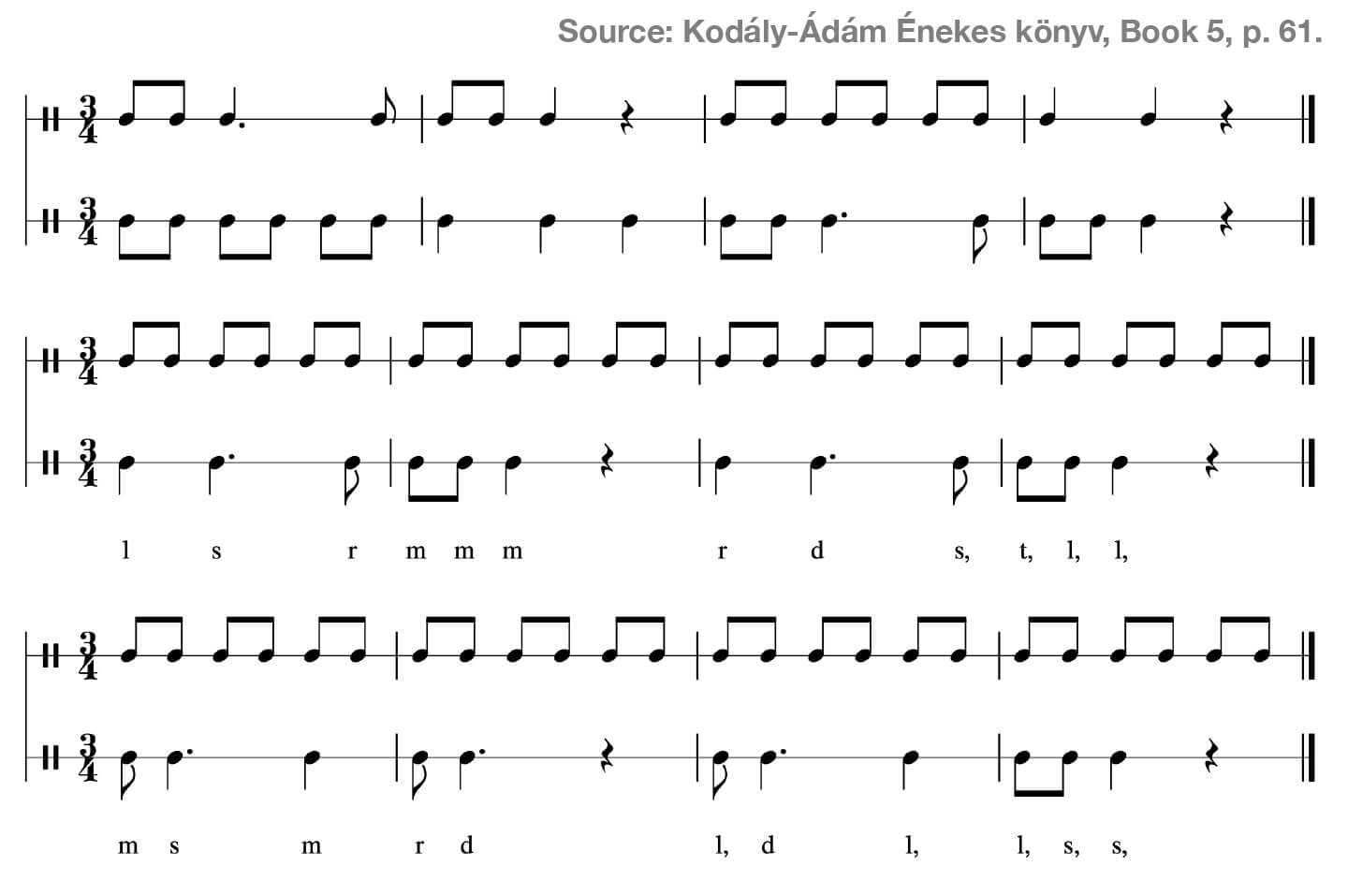
Rhythm exercises with changing metre
Example 119-121
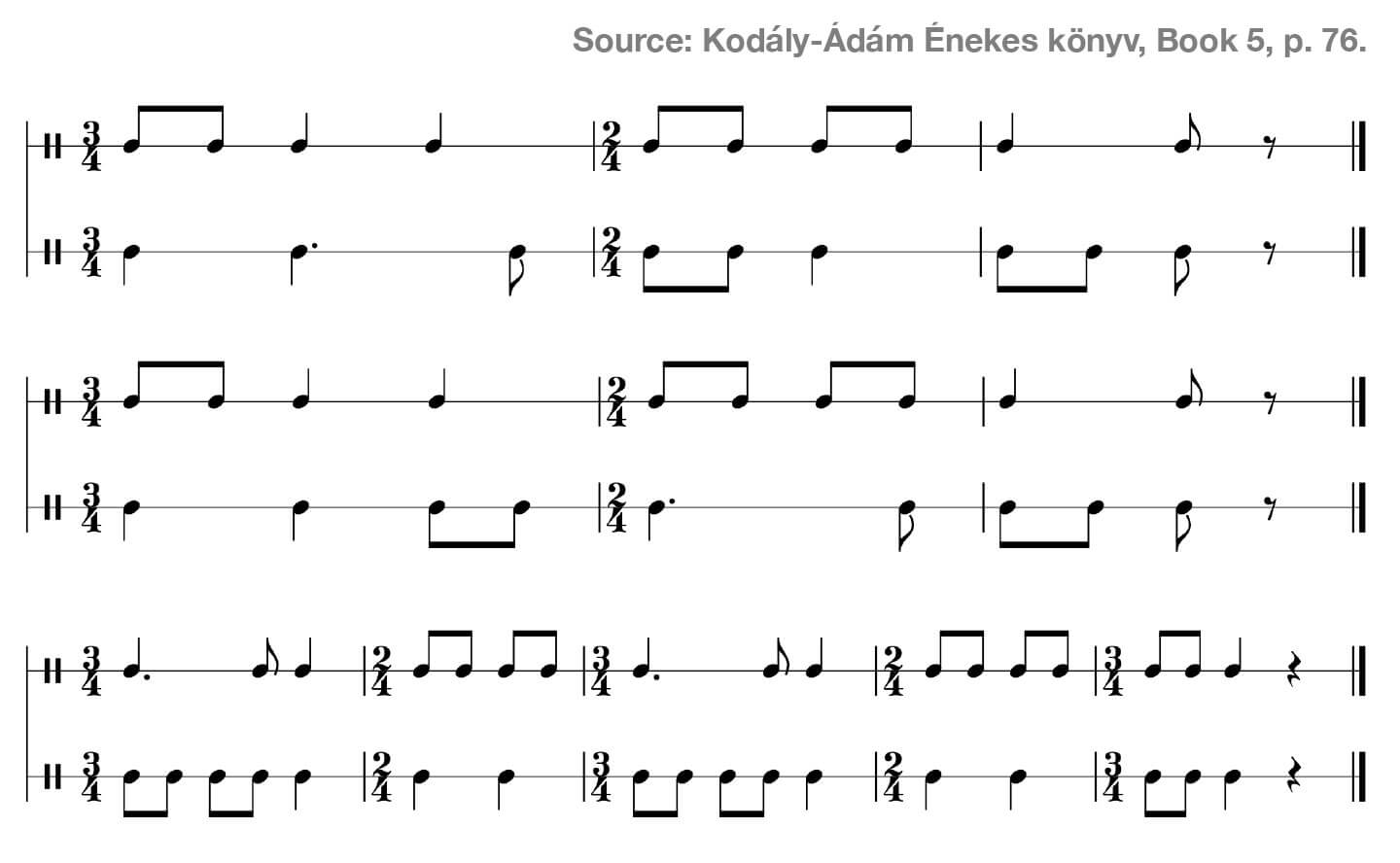
Rhythm exercises for practising 3/8 metre
Example 122-125
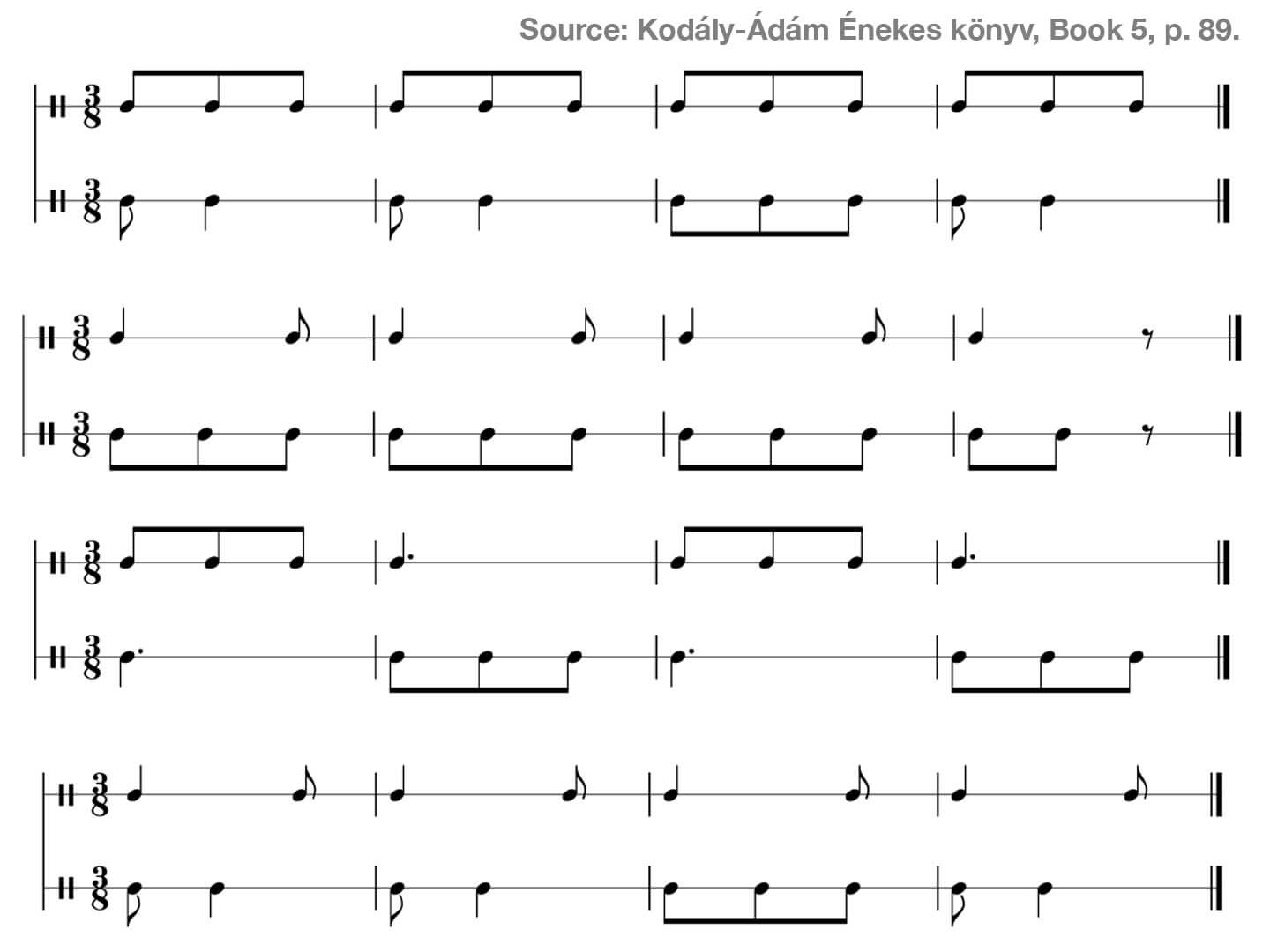
Simple two-part intonation exercises
la-pentatony
Example 126

Example 127-128

Example 129

do-pentatony
Example 130-134
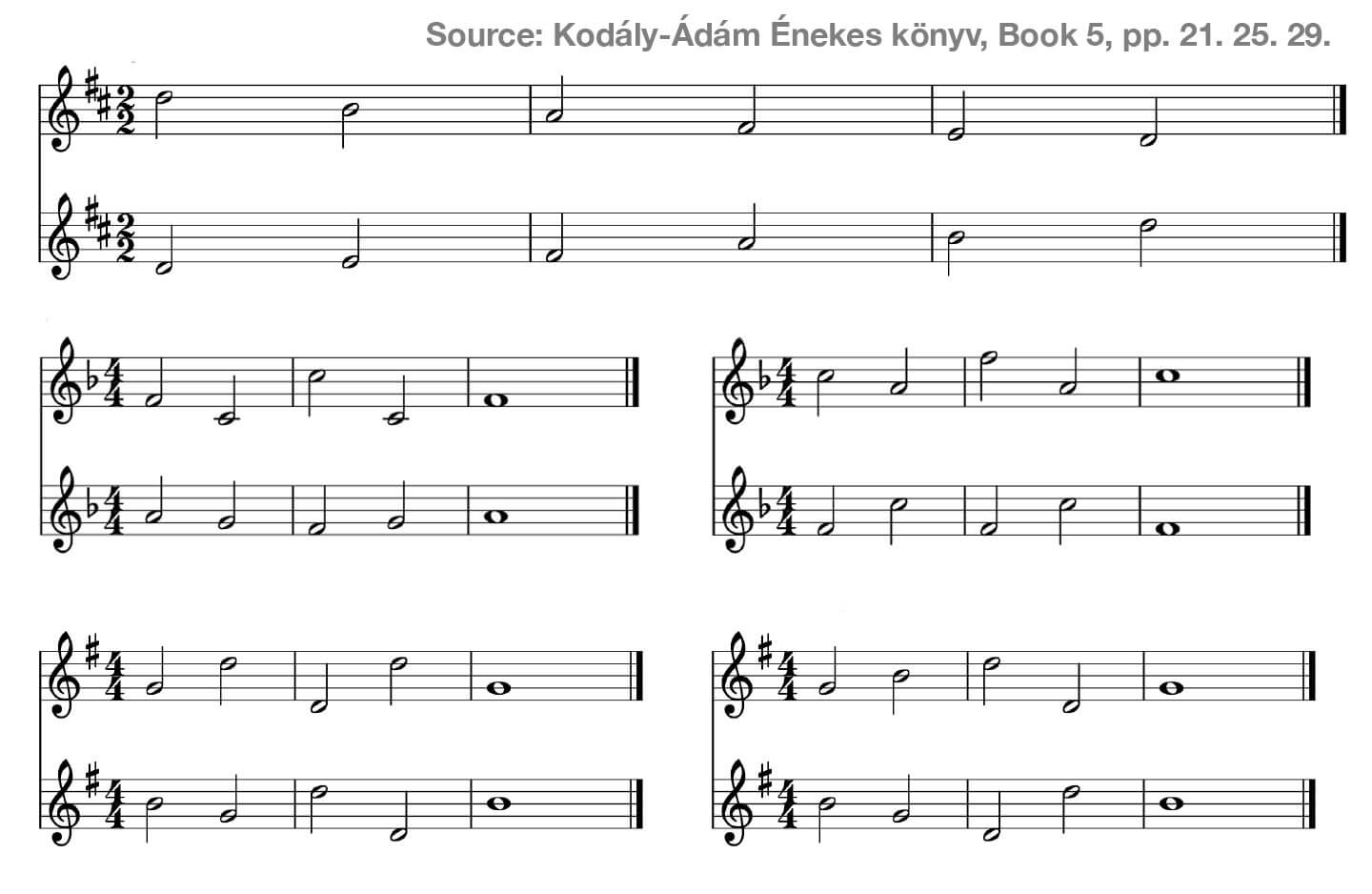
Example 135

Example 136

so-pentatony
Example 137

Example 138

Aeolian mode
Example 139

Example 140

Mixolydian mode
Example 141

Example 142

Example 143

Dorian mode
Example 144

Example 145

Example 146

Example 147

Major
Example 148

Example 149
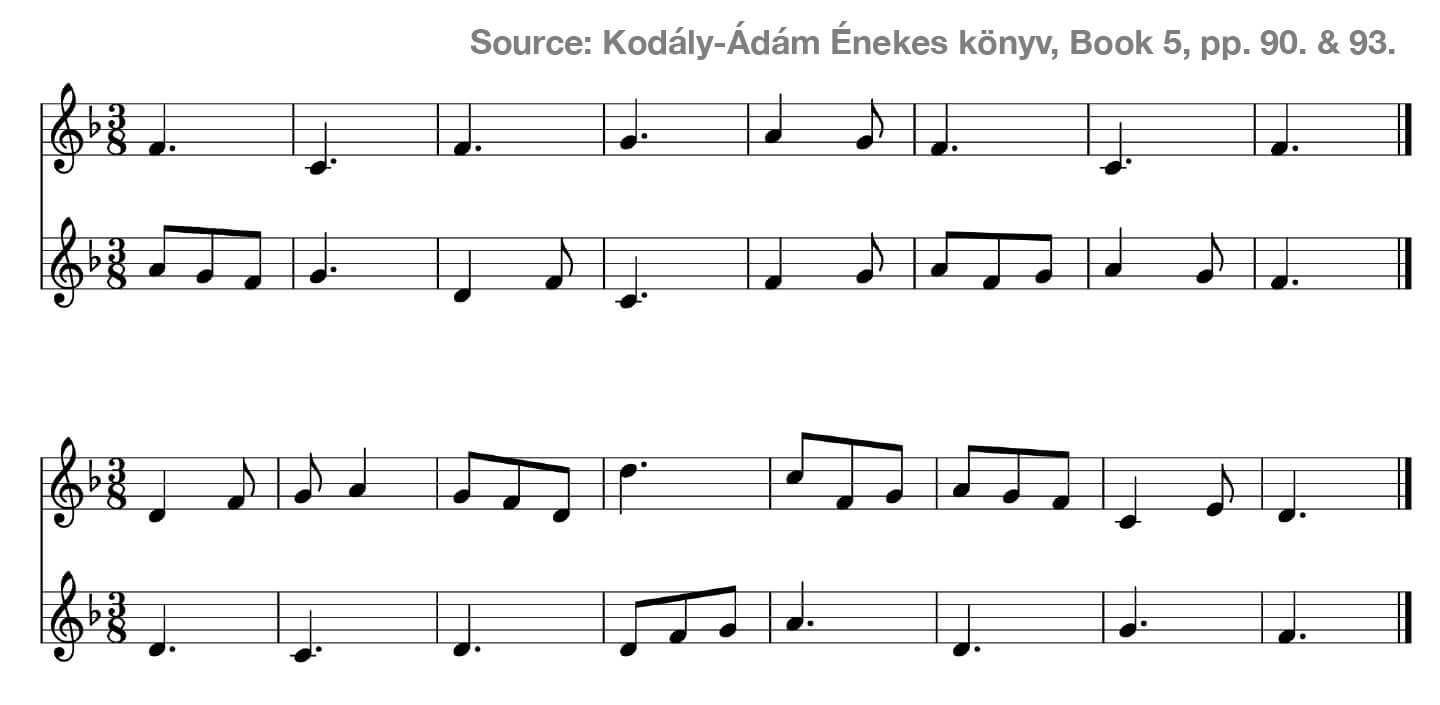
Two-part folksong arrangements
Example 150
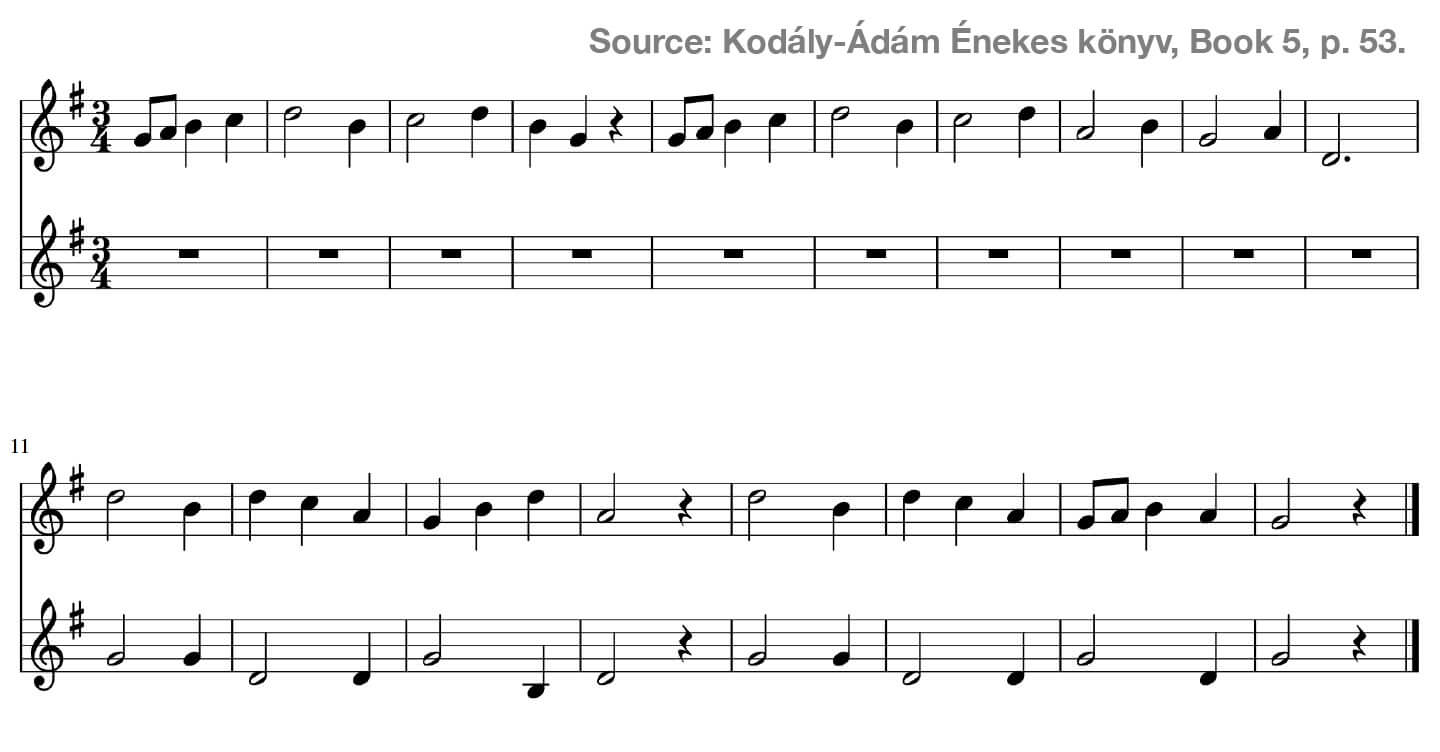
Two-part material, imitative counterpoint
SUGGESTED MATERIAL
Zoltán Kodály: Bicinia Hungarica I. No. 2. - “Zöld erdőben fütyül a rigó...”
Zoltán Kodály: Bicinia Hungarica I. No. 3. (no text)
Zoltán Kodály: Bicinia Hungarica II. No. 69. - “Röpülj páva...”
Zoltán Kodály: Bicinia Hungarica I. No. 18. - “Jaj Istenem, a világ...”
Zoltán Kodály: Bicinia Hungarica I. No. 28. (no text)
Zoltán Kodály: Bicinia Hungarica I. No. 20. - “Virágzik a kökényfa...”
Zoltán Kodály: Bicinia Hungarica II. No. 77. - “Csillagoknak teremtője...”
Zoltán Kodály: 15 two-part singing exercises No. 1.
Canons
Example 151

Example 152

Example 153
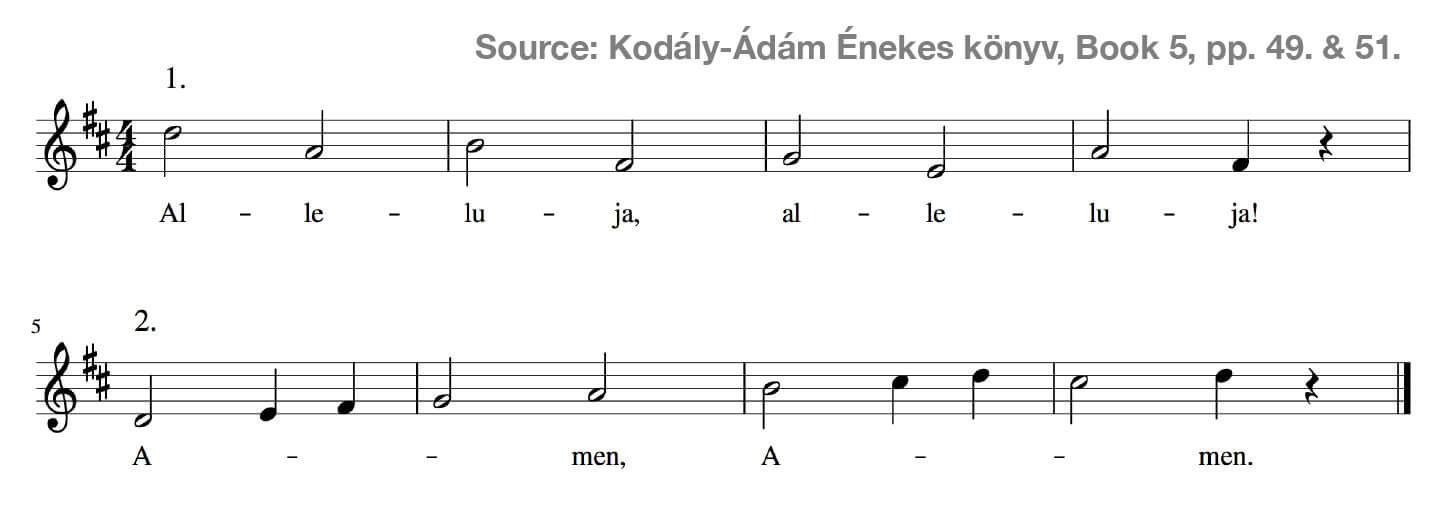
Example 154
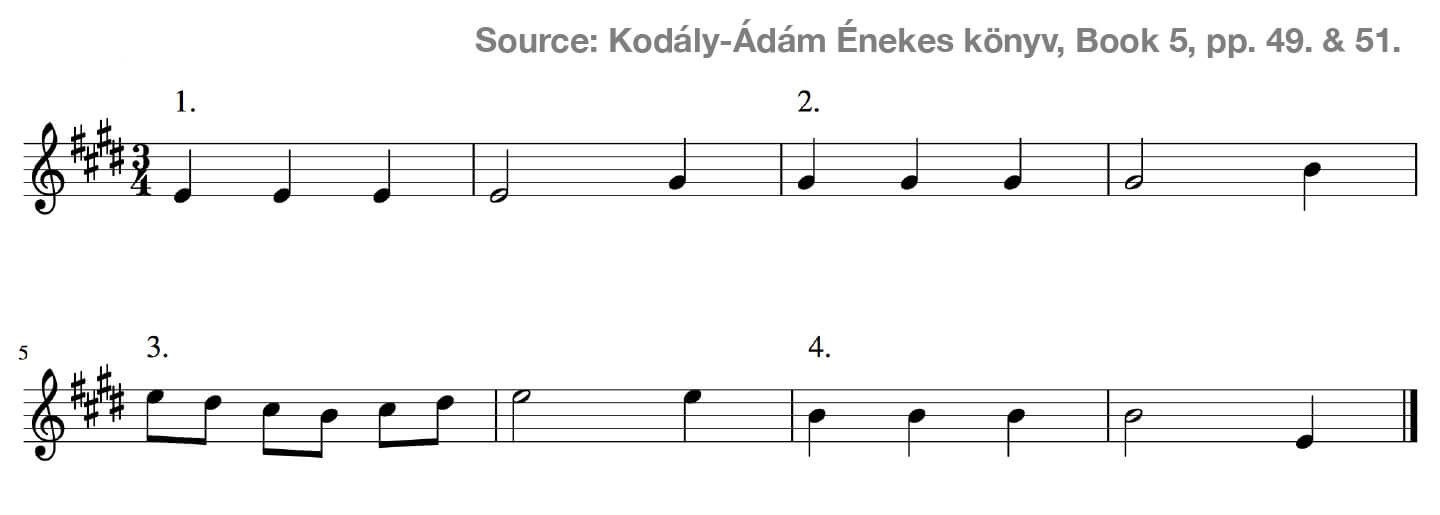
Example 155
